Abstract
Mice infected with live Listeria monocytogenes intravenously from 1 week to 3 months following splenectomy exhibit greatly enhanced antibacterial resistance to this micro-organism as compared to normal or sham-splenectomized mice. They survive a dose of Listeria 100 times higher than is the LD50 of this parasite for normal mice. Initially, the same number of viable micro-organisms lodge in the livers of splenectomized and normal hosts. However, within 24 h after infection, the number of viable Listeria which can be recovered from the livers of splenectomized animals is significantly reduced in comparison with control mice. This effect of splenectomy is transient and gradually disappears spontaneously within 3 months following splenectomy. Enhancement of anti-listerial resistance in splenectomized mice can be abrogated by the transfer of normal spleen cells. The presence of a normal splenic cell population that controls macrophage activation is postulated.
Full text
PDF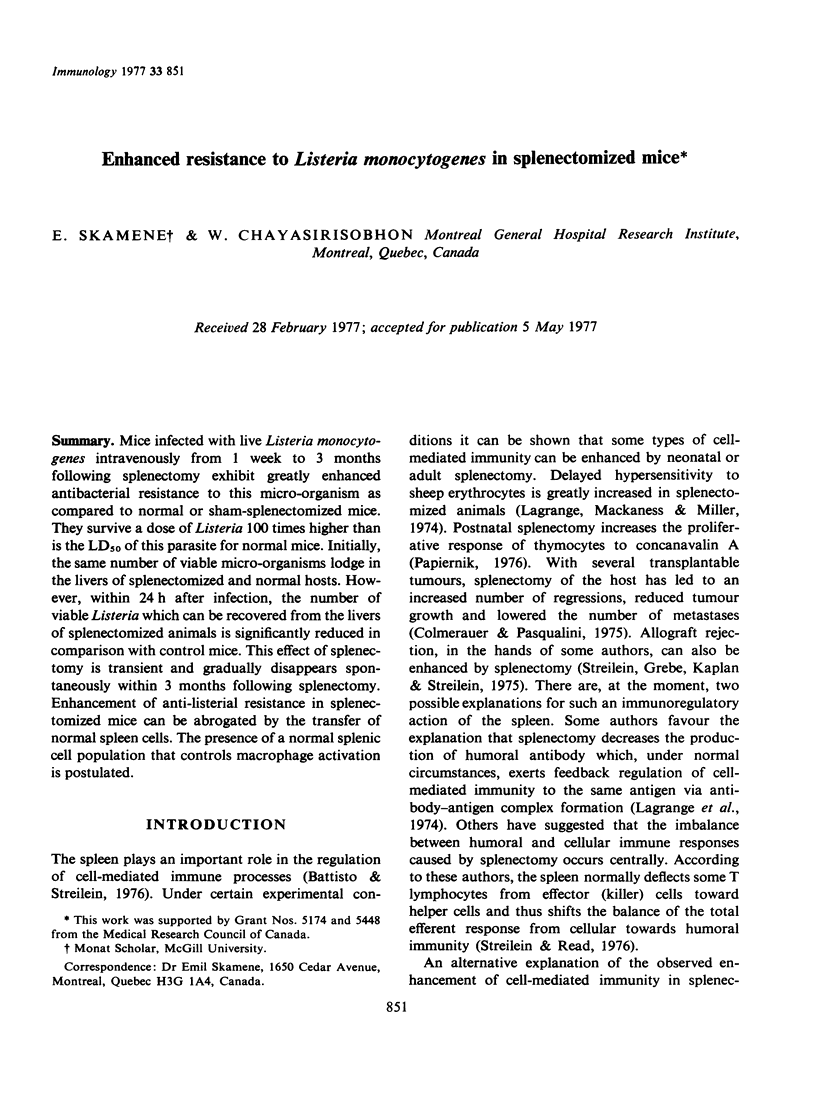
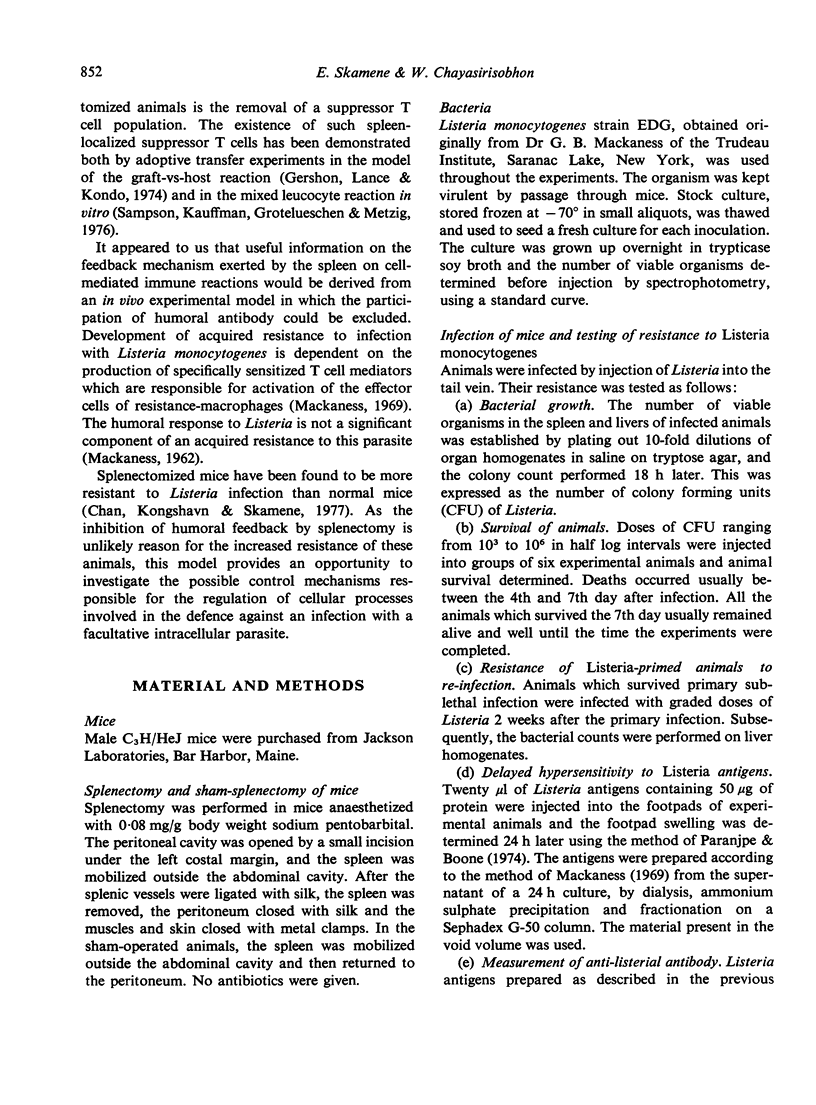
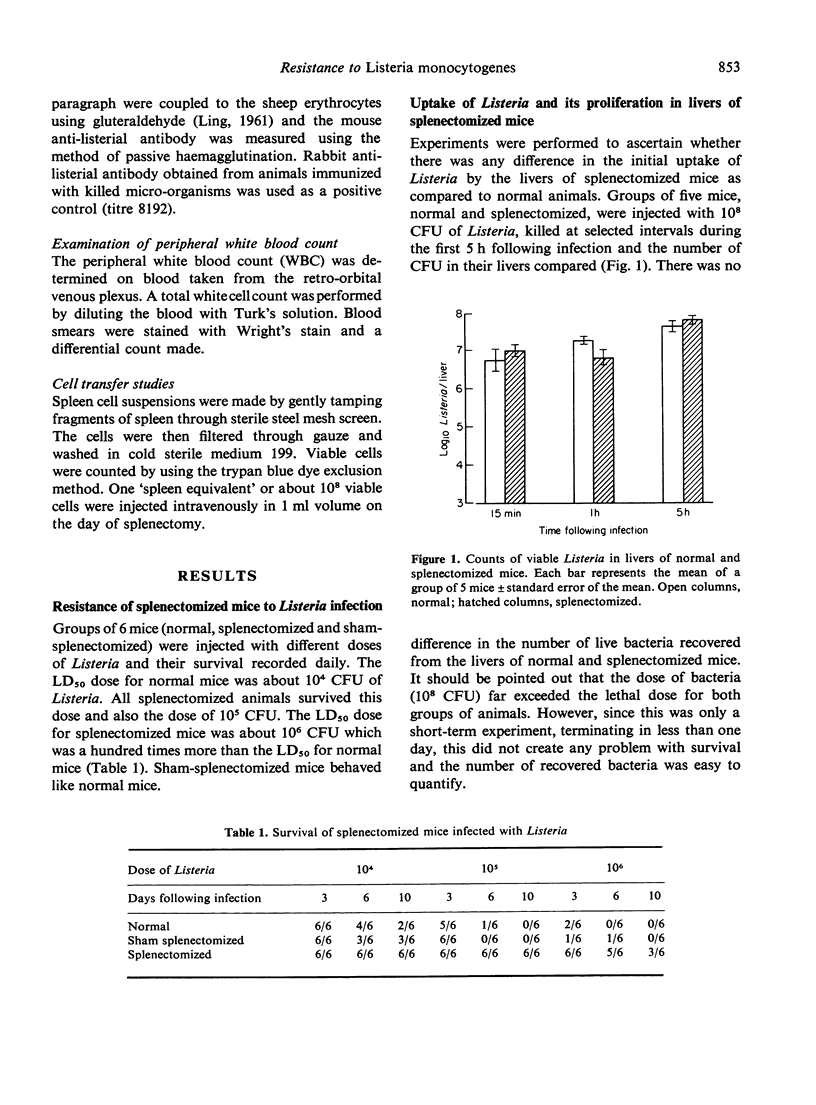
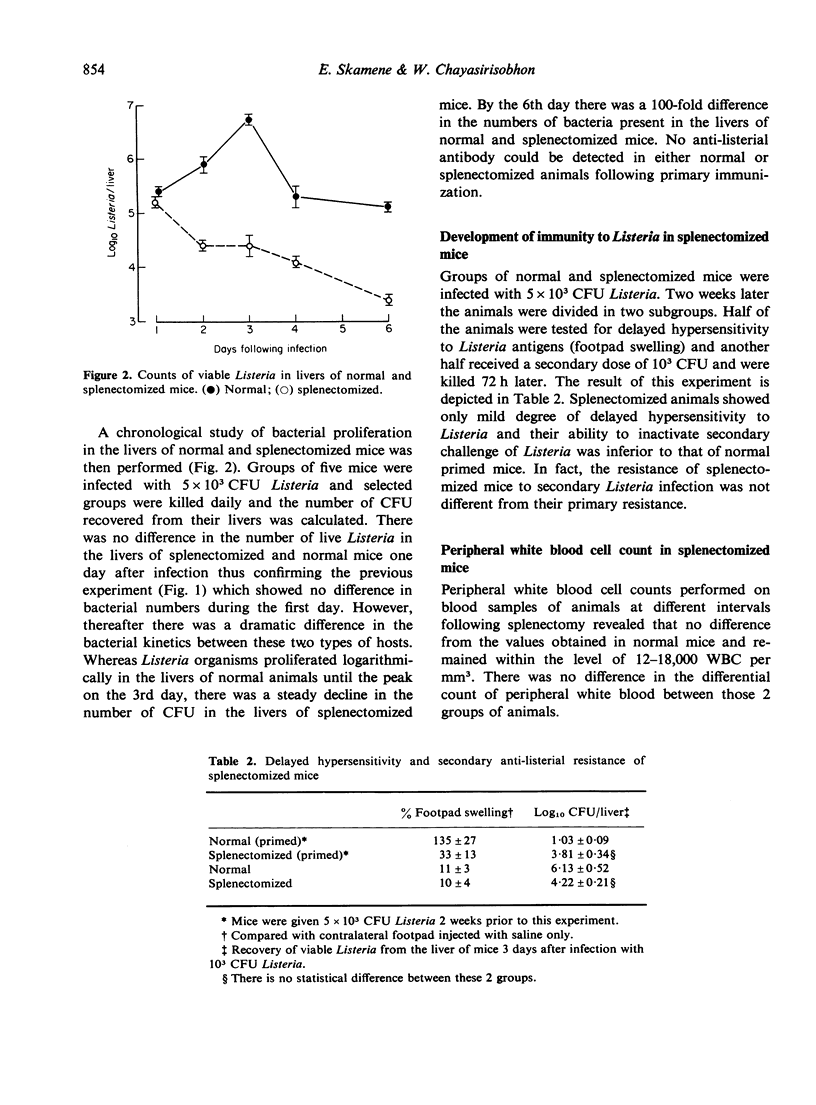
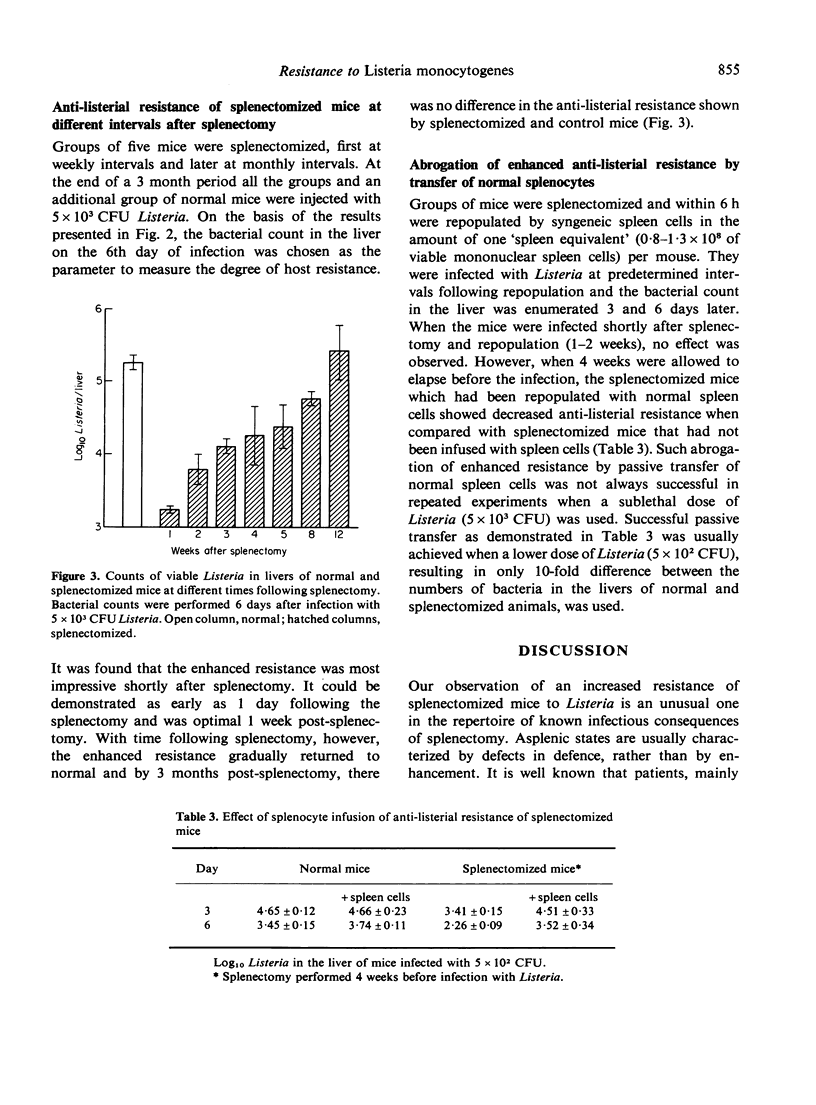
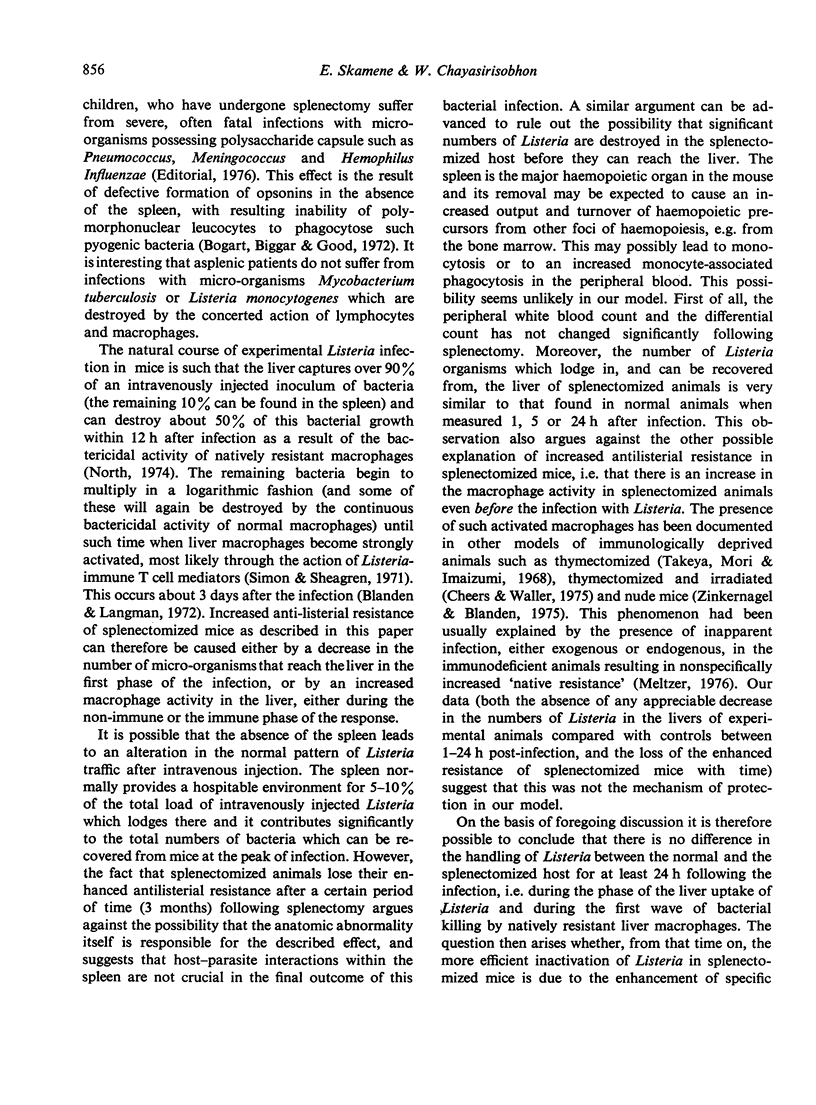
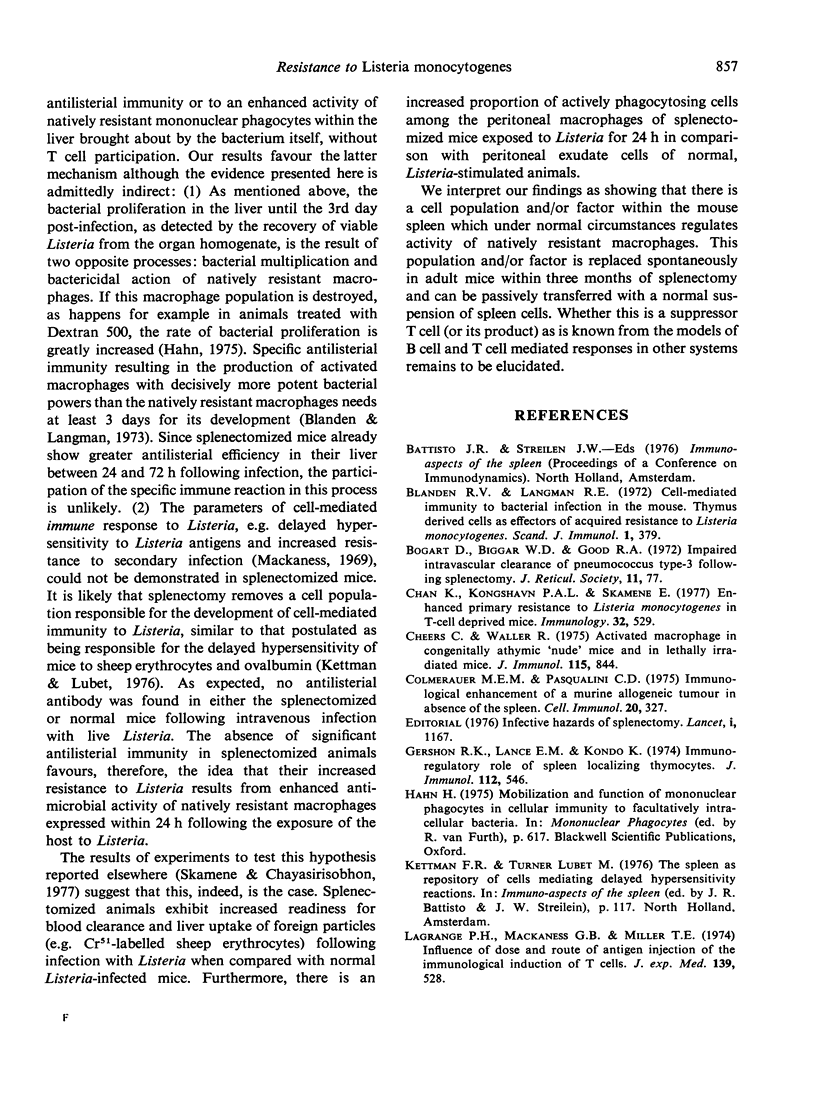
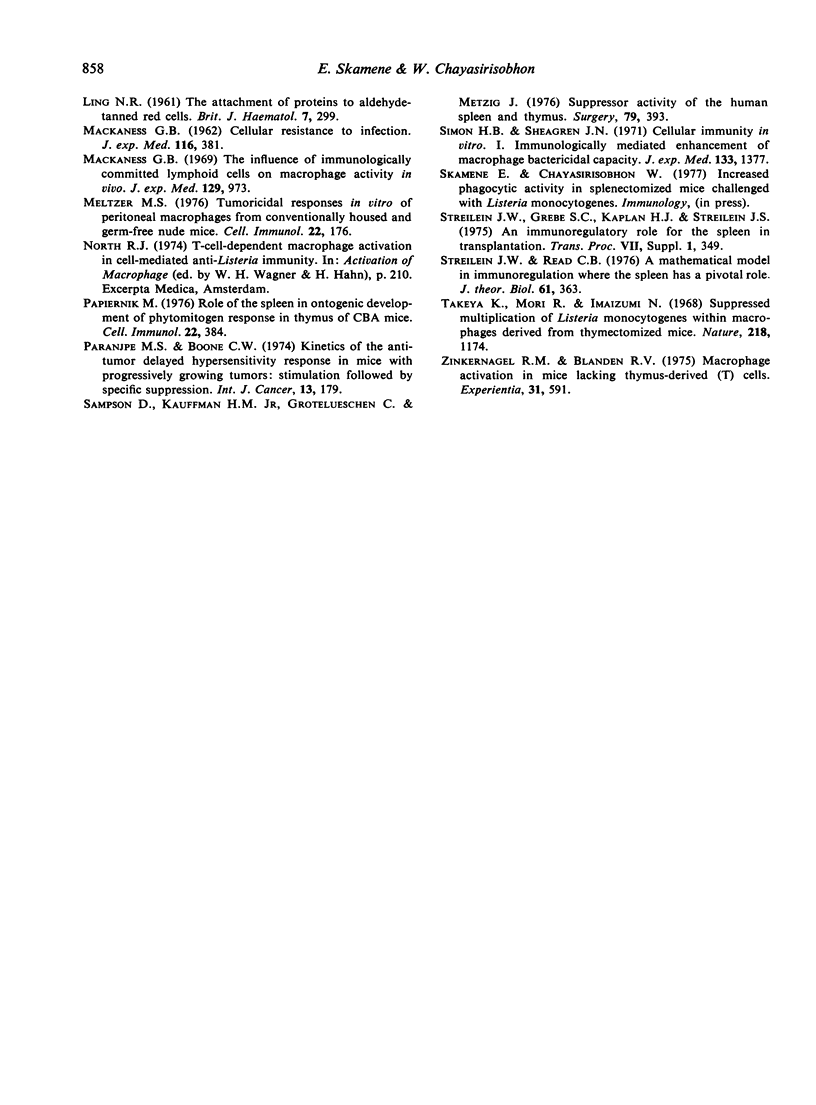
Selected References
These references are in PubMed. This may not be the complete list of references from this article.
- Blanden R. V., Langman R. E. Cell-mediated immunity to bacterial infection in the mouse. Thymus-derived cells as effectors of acquired resistance to Listeria monocytogenes. Scand J Immunol. 1972;1(4):379–391. doi: 10.1111/j.1365-3083.1972.tb03304.x. [DOI] [PubMed] [Google Scholar]
- Chan C., Kongshavn P. A., Skamene E. Enhanced primary resistance to Listeria monocytogenes in T cell-deprived mice. Immunology. 1977 Apr;32(4):529–537. [PMC free article] [PubMed] [Google Scholar]
- Cheers C., Waller R. Activated macrophages in congenitally athymic "nude mice" and in lethally irradiate mice. J Immunol. 1975 Sep;115(3):844–847. [PubMed] [Google Scholar]
- Colmerauer M. E., Pasqualine C. D. Immunological enhancement of a murine allogeneic tumor in absence of the spleen. Cell Immunol. 1975 Dec;20(2):327–329. doi: 10.1016/0008-8749(75)90109-4. [DOI] [PubMed] [Google Scholar]
- Gershon R. K., Lance E. M., Kondo K. Immuno-regulatory role of spleen localizing thymocytes. J Immunol. 1974 Feb;112(2):546–554. [PubMed] [Google Scholar]
- LING N. R. The attachment of proteins to aldehyde-tanned cells. Br J Haematol. 1961 Jul;7:299–302. doi: 10.1111/j.1365-2141.1961.tb00340.x. [DOI] [PubMed] [Google Scholar]
- Lagrange P. H., Mackaness G. B., Miller T. E. Influence of dose and route of antigen injection on the immunological induction of T cells. J Exp Med. 1974 Mar 1;139(3):528–542. doi: 10.1084/jem.139.3.528. [DOI] [PMC free article] [PubMed] [Google Scholar]
- MACKANESS G. B. Cellular resistance to infection. J Exp Med. 1962 Sep 1;116:381–406. doi: 10.1084/jem.116.3.381. [DOI] [PMC free article] [PubMed] [Google Scholar]
- Mackaness G. B. The influence of immunologically committed lymphoid cells on macrophage activity in vivo. J Exp Med. 1969 May 1;129(5):973–992. doi: 10.1084/jem.129.5.973. [DOI] [PMC free article] [PubMed] [Google Scholar]
- Meltzer M. S. Tumoricidal responses in vitro of peritoneal macrophages from conventionally housed and germ-free nude mice. Cell Immunol. 1976 Mar 1;22(1):176–181. doi: 10.1016/0008-8749(76)90018-6. [DOI] [PubMed] [Google Scholar]
- Papiernik M. Role of the spleen in ontogenic development of phytomitogen response in thymus of CBA mice. Cell Immunol. 1976 Mar 15;22(2):384–388. doi: 10.1016/0008-8749(76)90040-x. [DOI] [PubMed] [Google Scholar]
- Paranjpe M. S., Boone C. W. Kinetics of the anti-tumor delayed hypersensitivity response in mice with progressively growing tumors: stimulation followed by specific suppression. Int J Cancer. 1974 Feb 15;13(2):179–186. doi: 10.1002/ijc.2910130205. [DOI] [PubMed] [Google Scholar]
- Sampson D., Kauffman H. M., Jr, Grotelueschen C., Metzig J. Suppressor activity of the human spleen and thymus. Surgery. 1976 Apr;79(4):393–397. [PubMed] [Google Scholar]
- Simon H. B., Sheagren J. N. Cellular immunity in vitro. I. Immunologically mediated enhancement of macrophage bactericidal capacity. J Exp Med. 1971 Jun 1;133(6):1377–1389. doi: 10.1084/jem.133.6.1377. [DOI] [PMC free article] [PubMed] [Google Scholar]
- Streilein J. W., Read C. B. A mathematical model in immunoregulation where the spleen has a pivotal role. J Theor Biol. 1976 Sep 21;61(2):363–376. doi: 10.1016/0022-5193(76)90024-2. [DOI] [PubMed] [Google Scholar]
- Takeya K., Mori R., Imaizumi N. Suppressed multiplication of Listeria monocytogenes within macrophages derived from thymectomized mice. Nature. 1968 Jun 22;218(5147):1174–1174. doi: 10.1038/2181174a0. [DOI] [PubMed] [Google Scholar]
- Zinkernagel R. M., Blanden R. V. Macrophage activation in mice lacking thymus-derived (T) cells. Experientia. 1975 May 15;31(5):591–593. doi: 10.1007/BF01932477. [DOI] [PubMed] [Google Scholar]


